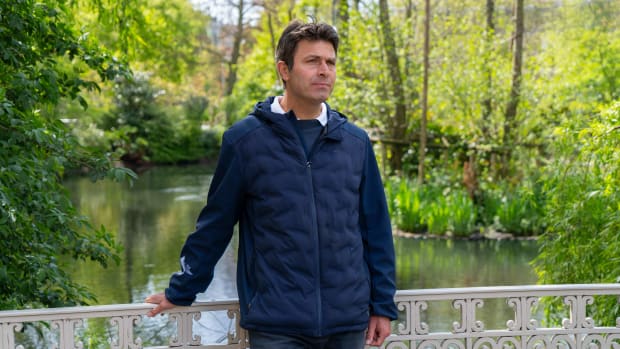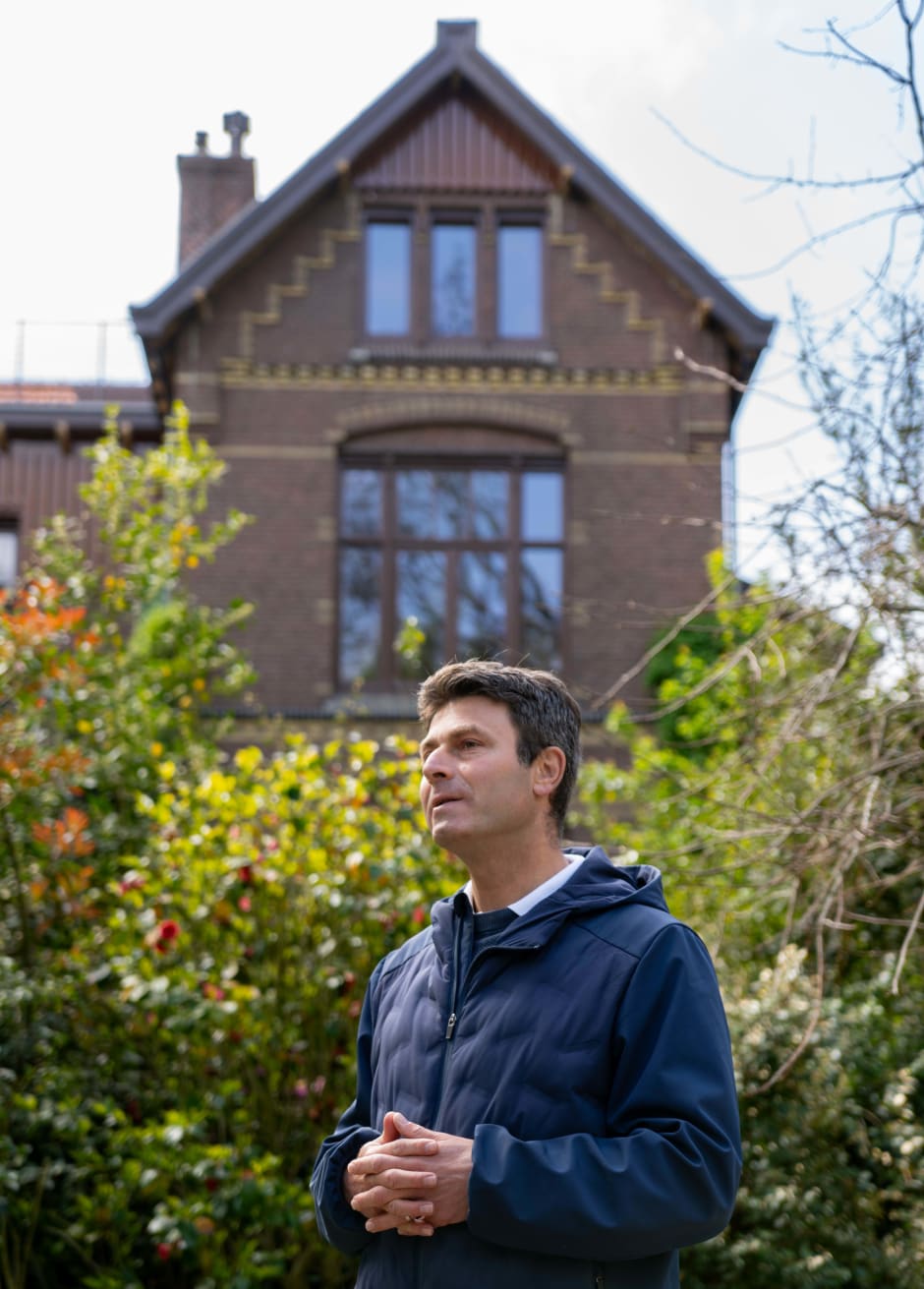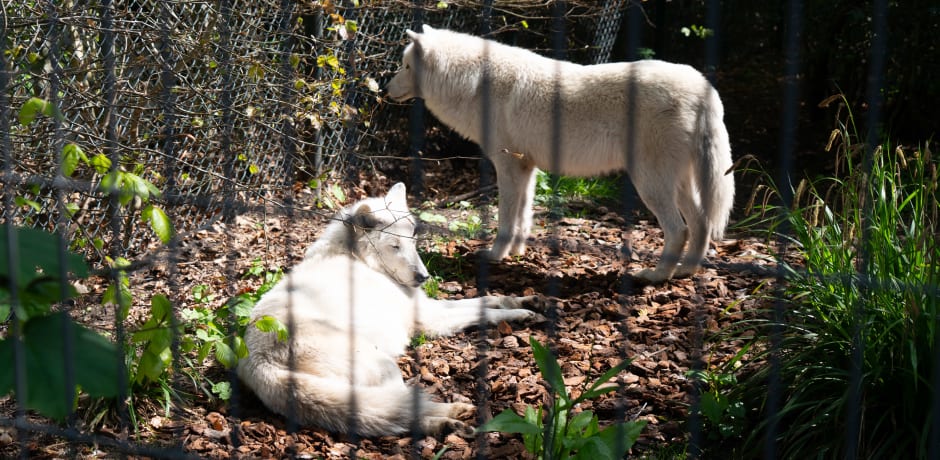
UvA scientist Willem Frankenhuis lived among zebras and monkeys as a child
Willem Frankenhuis grew up among zebras, monkeys, and tigers — quite literally, as his childhood unfolded on the grounds of Artis Zoo, where his father was the director. Now, after years of researching evolution and behavior abroad, he has returned to the University of Amsterdam, where his scientific journey once began — right in the middle of the zoo.
Amidst the roars of chimpanzees and the smell of something animalistic, UvA associate professor of evolutionary psychobiology Willem Frankenhuis points to a stately building surrounded by greenery. “That’s where I grew up.” His father, Maarten Frankenhuis, was director of Artis from 1990 to 2003. As a result, Frankenhuis spent nearly his entire childhood and student days in the middle of Amsterdam’s Zoo
The zoo as a backyard
Frankenhuis stands on the path that leads directly from the park to his parents’ house. He remembers moving to the zoo as a nine-year-old child. “The first few days, I woke up early because of the zebras bellowing.” Looking up at the window of his former bedroom, which overlooks the park, he continues: “Before I went to school, around six or seven o’clock, I helped animal keeper Max clean the zebra enclosure. Then I took a shower and had breakfast at half past seven and went to school. I had already had quite an adventure before the day had even begun.”

Frankenhuis talks about his unusual housemate from his childhood. “We took in a tamarin monkey called Godzilla, who had been rejected by the group at Artis Zoo. The little monkey lived in an incubator and we fed him drops of milk with a pipette. He always crawled under my clothes. But after a while he grew stronger. Then the moment came when he had to find his place in the group again. Step by step, he succeeded—first in an enclosure next door to get used to it and eventually back among the other monkeys. That was very special to experience.”
Where the gorillas’ outdoor enclosure is now, Frankenhuis points to a long slope. “I used to skateboard here after closing time when the park was empty and I had it all to myself.”
Despite having the zoo as his backyard, Frankenhuis decided to move out halfway through his studies in philosophy and psychology at the University of Amsterdam. Didn’t he miss Artis? “I’m a bit embarassed to say this, but when you live here, you get used to it and it’s no longer so special. Like other students, I wanted more freedom and independence.”
It was only when he no longer lived there that the sense of normality gave way to a deeper appreciation. “It was an absolute privilege,” he emphasizes about growing up in the zoo. “Walking straight out of your backyard into the zoo is, of course, very special.”
Bloodstained shoe
In addition to his own vivid memories, his father also left behind a tangible legacy. During his time as director, he collected stories and compiled them into a series of memories for his children. As he walks past the new lion enclosure, Frankenhuis tells a story his father told him about the former predator gallery: one morning, a bloody shoe was found in the tiger enclosure. Later, the owner came forward: he had walked across the gallery at night and been grabbed by a tiger. The man later tried to recover the damage, but when director Frankenhuis pointed out that he would then also have to pay for the cost of the traumatized staff, he decided not to pursue the matter further.
“To me, my father was much more than just a director. I admire how he used his role to contribute to society in a broader sense,” says Frankenhuis. For example, his father wrote a book about the hidden role of Artis during the Second World War, when the zoo provided shelter for some two to three hundred Jewish people in hiding. At the macaque enclosure, Frankenhuis explains how a Jewish family hid in the monkey rock, while unsuspecting Nazis stood right in front of it, staring at the monkeys — unaware of the people hiding just meters away. No one in hiding was ever arrested at Artis.
During Amsterdam Gay Pride, his father also organized guided tours about homosexual behavior in animals, something he had carefully researched and which unexpectedly became a crowd favorite. “This is still an important theme in the city of Amsterdam. The fact that homosexual behavior occurs in nature should not matter, but it can promote tolerance and acceptance. In this way, my father showed that a zoo is not just about animals, but also about social engagement.”

Full circle
Frankenhuis explains how his father may have planted the seeds for his scientific career in evolutionary psychobiology. “My father always asked me questions about animals and evolution. To be honest, when I lived in Artis, I didn’t think this would ever be my future,” says Frankenhuis. After studying in Amsterdam, he went on to study social sciences in England. There, he was able to combine playing soccer on the university team with studying human behavior.
The seeds sown during his childhood in Artis really blossomed when he discovered Richard Dawkins’ book The Selfish Gene while studying in England. “I stood in a bookstore reading this book for two hours until an employee told me the store was closing. So, I bought the book. It gave me a framework for asking deeper questions about human behavior in comparison to animal behavior and evolution. Since then, I’ve been completely committed to evolution and behavior.” At the time, there was no specific program in the Netherlands that could feed his interest in evolution and behavior. That’s why Frankenhuis left for UCLA in the United States.
“And now we’ve come full circle,” says Frankenhuis, standing in front of the zebra enclosure – the same place where he started every morning as a nine-year-old boy. After an international academic career, Frankenhuis returned to the UvA last academic year as an associate professor in the minor Evolutionary Psychobiology and the new master’s program Evolution of Behavior and Mind. “This was exactly what I wanted to study, and now it exists in the Netherlands. I have never enjoyed teaching as much as I do now. It is a real treat to have students and PhD candidates around me who find evolution and behavior as interesting as I do.”


